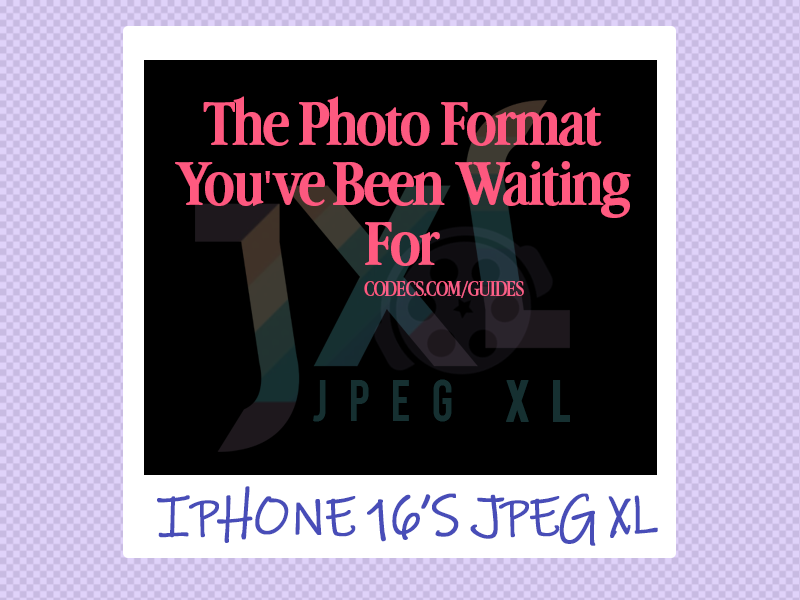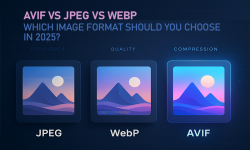With the launch of the iPhone 16, Apple introduced support for JPEG XL, a modern image format that offers significant benefits for both casual and professional photographers.
Here’s everything you need to know about this new format and why it matters for your photography experience.
What is JPEG XL?
JPEG XL, standardized in early 2022, aims to be the successor to the aging JPEG format by improving image quality, reducing file sizes, and offering greater versatility. It’s designed to handle a wide range of image types, including photos, animations, and transparency, making it a great choice for a variety of uses—from sharing on social media to high-end photography.
Key Benefits of JPEG XL
-
Improved Compression: JPEG XL compresses your photos more efficiently than traditional formats, allowing you to store more images without sacrificing quality. This is especially useful for users with limited storage.
-
Higher Quality: The format supports higher dynamic range and better color depth, ensuring your photos look vivid and lifelike. This improvement benefits both amateur and professional photographers who care about image detail.
-
Versatile Usage: JPEG XL handles not just static images but also animated pictures and images with transparency. This broad compatibility makes it ideal for both personal and professional use, from casual snapshots to design projects.
-
Backward Compatibility: One of the standout features of JPEG XL is its ability to seamlessly integrate with older JPEG files, making the transition easier for users without losing access to their previous images.
How Does JPEG XL Affect Your Photos?
-
Storage Efficiency: JPEG XL reduces the file size of high-resolution photos, allowing you to store more images on your device. This is a game changer for users who frequently take high-quality pictures and find themselves running out of storage.
-
Enhanced Editing: Thanks to the greater detail preserved in JPEG XL images, you have more flexibility when editing. The format maintains higher fidelity, meaning less quality loss during post-processing.
Apple’s Move: Why JPEG XL in iPhone 16?
The adoption of JPEG XL in the iPhone 16 sets a new standard for digital photography. However, some users have raised valid questions about why Apple limited this feature to the latest iPhone models.
As mentioned by a user on Hacker News, “Why on earth can a one-year-old iPhone 15’s CPU not handle encoding JPEG XL? It can encode 4K video in real-time, so this should be no problem at all, right?” .
This has led to discussions around Apple’s strategy to incentivize new phone sales through software features. However, some argue that JPEG XL could be supported by older models, especially since it’s not reliant on hardware acceleration.
A user pointed out that the format "is supported on iPhones running iOS 17 or later, including devices as old as the iPhone XS" . So, it's not entirely limited to the iPhone 16, but the latest device brings the format to the forefront of Apple’s camera system.
JPEG XL vs. AVIF: What’s the Difference?
While JPEG XL is making waves with Apple’s latest iPhone, there has been ongoing debate about the comparison between JPEG XL and other formats like AVIF. A popular YouTube video highlights the differences between the two, with some arguing that AVIF compresses photos even more, though it can suffer from slower loading times .
Others point out that for high-quality images, JPEG XL surpasses AVIF in terms of fidelity and detail, particularly in professional settings.
A commenter on the discussion suggested, "At lower quality levels, AVIF files are smaller, but at higher quality, JPEG XL files are more efficient."
Meanwhile, JPEG XL shines in lossless compression, which is why Apple opted for it in their iPhone 16’s ProRAW mode .
Why JPEG XL Isn’t Just a Gimmick
Some have speculated whether features like JPEG XL drive new phone sales. One commenter pushed back on this notion, saying, “Nobody on the face of the earth is making a decision about whether or not to buy a new phone based on JPEG-XL support" .
While it’s unlikely that JPEG XL alone will sway purchasing decisions, it’s clear that Apple’s choice to adopt the format reflects their commitment to improving the user experience for photographers.
For those serious about photography, JPEG XL offers significant upgrades in image quality, storage efficiency, and editing capabilities—making it more than just a minor software update.
As a conclusion, we can say that Apple’s move to support JPEG XL in the iPhone 16 brings a host of improvements that photographers, both casual and professional, will appreciate.
With better compression, higher quality, and more versatility, JPEG XL is set to become the go-to format for anyone looking to get the most out of their iPhone’s camera.
Check out this YouTube video for a more in-depth comparison between JPEG XL and AVIF.
And this article: Why Apple Uses JPEG XL in the iPhone 16 and What it Means for Your Photos.




![How to Add Multiple ISOs to One USB with YUMI exFAT [2026]](/thumb/300x150/0/guides/pictures/multiple-isos-with-yumi-exfat.webp)








How to Download HEVC Video Extension for Free
Worked flawlessly on some hi def files I was backing up to my PC from my cell phone. Yep, ...
Read More →AV1 vs H.265: Which Video Codec Should You Ch...
@anon123456 only because HW support is lacking. With proper HW decoding it would be the same. It was the ...
Read More →Best Player for Subtitles (2025 Guide)
@P.A. Blok You're right, thanks for the feedback! We've updated the guide to clarify that VLC does auto-detect ...
Read More →